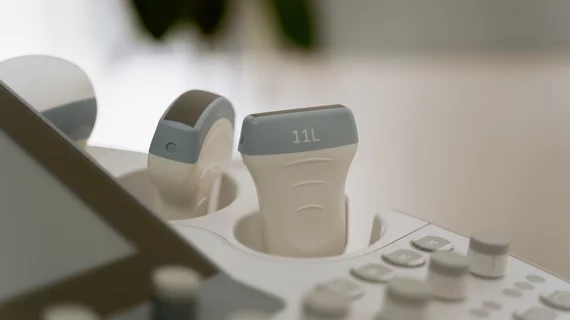How beneficial is MR-directed breast ultrasound in reducing biopsies?
New research delves deeper into exactly which MR-directed breast ultrasound findings are most likely to result in malignancy, potentially eliminating the need for MR-guided biopsies in some patients.
Though all biopsies are somewhat invasive, MR-guided biopsies in women with abnormal breast imaging are more costly and time-consuming that those conducted under ultrasound guidance. As such, some providers first turn to MR-directed ultrasound to investigate suspicious findings before turning to MRI.
After analyzing the cases of nearly 900 patients sent for ultrasound after suspicious findings were identified on their breast MRI, a team of experts determined that correlating masses initially detected on MRI are significantly more likely to result in a cancer diagnosis than other common findings, like regions of nonmass enhancement and foci.
These findings could serve as a guide for providers tasked with making decisions on when it’s necessary to proceed with MR-guided biopsies in patients with suspicious imaging, authors of the new paper suggested.
“MR images serve as a guide with regards to location, size and morphology of the lesion. If the lesion is found on ultrasound and confidently determined to correlate with MR findings, an ultrasound-guided biopsy may be performed negating the need for MR-guided biopsy,” corresponding author Melissa Reichman, MD, with Weill Cornell Medicine at New York-Presbyterian Hospital, and colleagues explained.
In this study, there was an ultrasound correlate for 34% of the 852 patients sent for ultrasound after their initial breast MRI. Of those, 28% were later confirmed to be malignant.
Masses accounted for nearly 60% of the malignant findings on imaging, while 24% were regions of nonmass enhancement and 7.6% were foci. Another 9.3% were classified as either lymph nodes, cysts or scar tissue.
The authors suggested these findings related to ultrasound correlates should be considered when deciding whether someone should be sent for MR-directed ultrasound.
“MR-directed ultrasound has a dual benefit of decreasing cost and discomfort for the patient when a sonographic correlate for US-guided biopsy is identified,” the group wrote. “However, it is important to be aware of the yield of MR-directed US for different MR findings to prevent delays in care. The likelihood of a sonographic correlate should be taken into consideration when recommending MR-directed ultrasound in these patients.”
The study abstract is available in Clinical Imaging.

